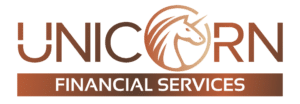
Self-managed Super Funds (SMSFs) can offer Australian investors greater control and more flexibility over their retirement savings. But while there are advantages to establishing an SMSF, it’s important that investors understand the potential risks of this type of investment. In this blog, we'll take a look at the pros and cons of setting up an SMSF and provide some tips for getting the most out of your SMSF.
We'll also explain the kinds of risks you should be aware of when investing in an SMSF, as well as how to minimise those risks. So whether you're considering establishing an SMSF or already have one, this blog will help you make informed decisions and ensure your retirement savings are in the best possible shape.
SMSFs offer members more control and flexibility over their retirement savings than traditional super funds. SMSF trustees can invest in a wide range of assets, such as shares, property, and managed funds. They are also able to choose how much money they want to contribute each year up to the concessional or non-concessional contribution caps set by the government.
Moreover, SMSFs are the ideal choice for those who want control over their retirement savings. As trustees, members have complete control over decisions made concerning their fund and its investments. The maximum number of members is six and each member must be a trustee of the fund.
The sole purpose of an SMSF is to provide retirement benefits as outlined in the Superannuation Industry (Supervision) Act 1993 (SIS Act). Members' superannuation funds are paid into the SMSF, and trustees must ensure all investments are appropriate for their risk profile. An investment strategy needs to be created that considers all members of the fund.
A self-managed super fund (SMSF) offers several benefits that other types of funds don’t, including:
Self-managed super funds (SMSFs) have some potential drawbacks that should be considered before establishing one:
Setting up a Self-Managed Super Fund (SMSF) in Australia is a great way to take control of your retirement savings. It offers flexibility and the potential for greater returns, but there are also risks associated with running an SMSF. To set up an SMSF, you’ll need to determine whether it’s the best option for you, register your SMSF and establish a trust deed, appoint trustees or directors, obtain an Australian Business Number (ABN) and register for Goods and Services Tax (GST), open bank accounts, invest funds and comply with relevant legislation.
You should also consider obtaining professional advice from a financial adviser or accountant to help you understand the setting up process and ensure that your fund is compliant. Once an SMSF has been set up, trustees must comply with a range of on-going obligations, such as keeping records, preparing accounts and financial statements and submitting regular returns to the ATO. It’s important to keep up with these ongoing requirements in order to ensure the fund remains compliant. Taking control of your retirement savings with an SMSF can be a great way to achieve financial freedom in retirement, but it’s important to make sure you understand the risks and are aware of the compliance obligations before taking this step. (source: ato)
For those looking for greater control over their retirement, SMSFs may be the perfect vehicle. With greater control comes great responsibility - it is important that you understand your obligations as a trustee before setting up an SMSF.
It is also recommended that you seek independent professional advice to ensure your investments meet the requirements of the SIS Act and protect you from any potential risks. Remember that by understanding all the obligations and responsibilities that come with setting up an SMSF, you can ensure your retirement savings are secure.
